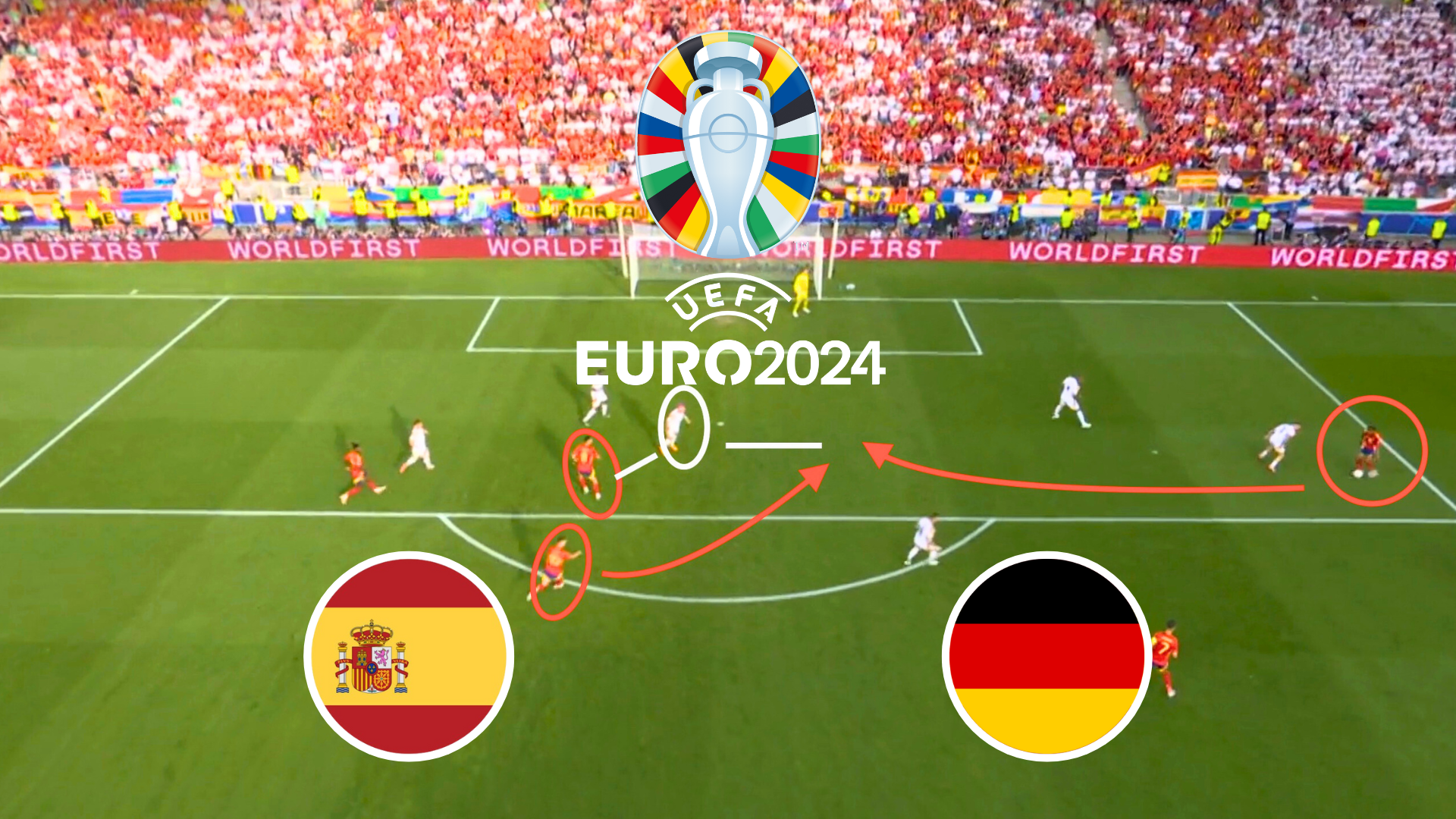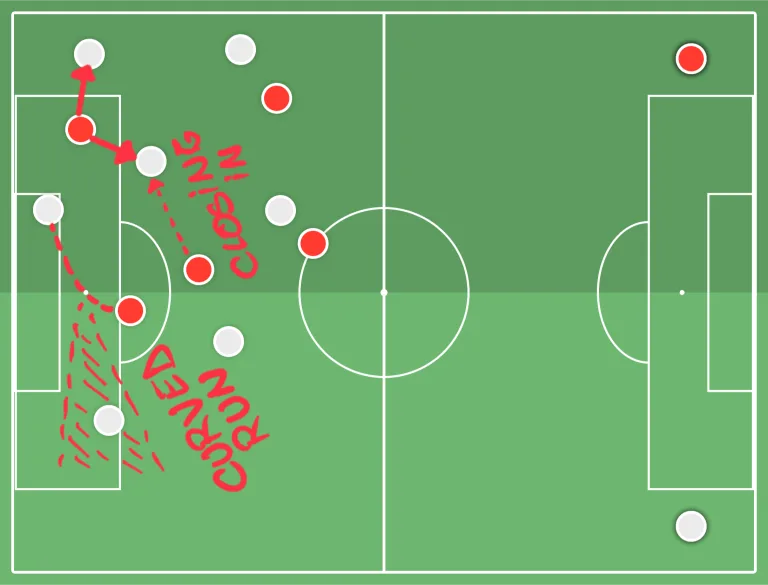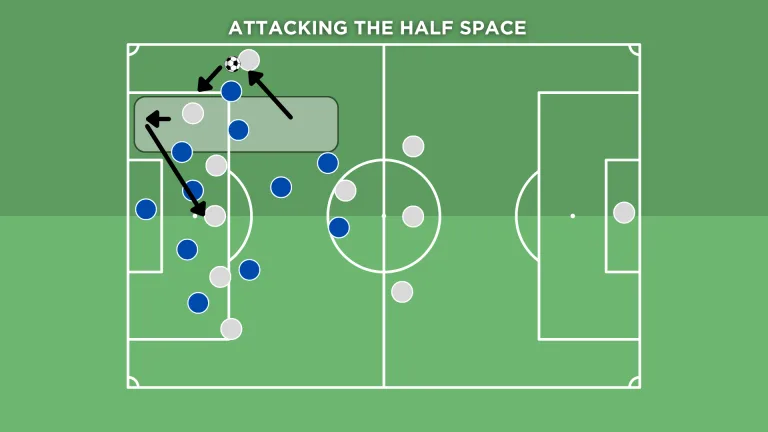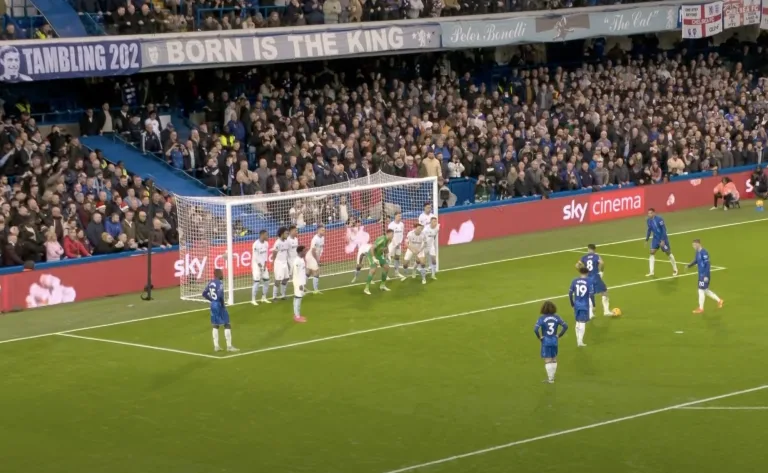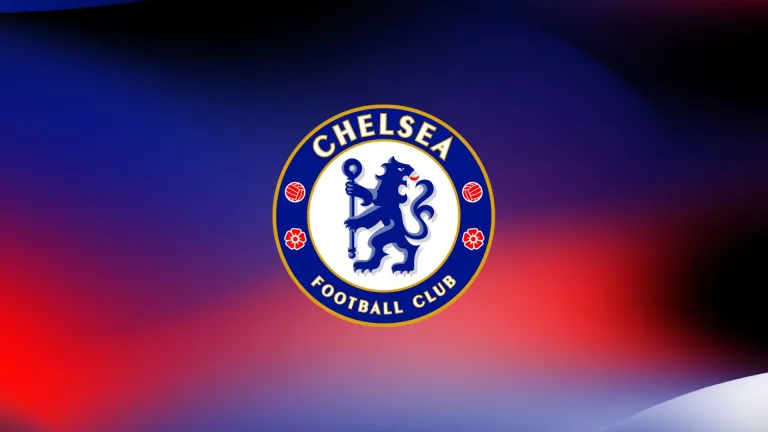How Wesley Fofana Unlocked Chelsea’s Build-up Play Against Arsenal
In Chelsea’s 1-1 draw against London rivals Arsenal, Wesley Fofana has been a key player in The Blues’ back line. He enthusiastically took part in the build-up play and has had one of his best games of the season. So what made this game special for Chelsea’s 23-year-old defender, and how his play influenced Chelsea’s build up from the back?
Chelsea’s Build-up Structure
First, we need to look at Chelsea’s shape during build-up. Enzo Maresca has set his team to build-up with a back four that transformed into a back three in possession. Malo Guso would invert in midfield after the first phase of build-up. Since Romeo Lavia has started for Chelsea, Malo Gusto did not invert to be in line with Moises Caicedo, but further up in the pitch. His position was advanced, to be in line with Chelsea’s number 10, Cole Palmer. We see from his heatmap that his touches were in advanced positions on the left side.
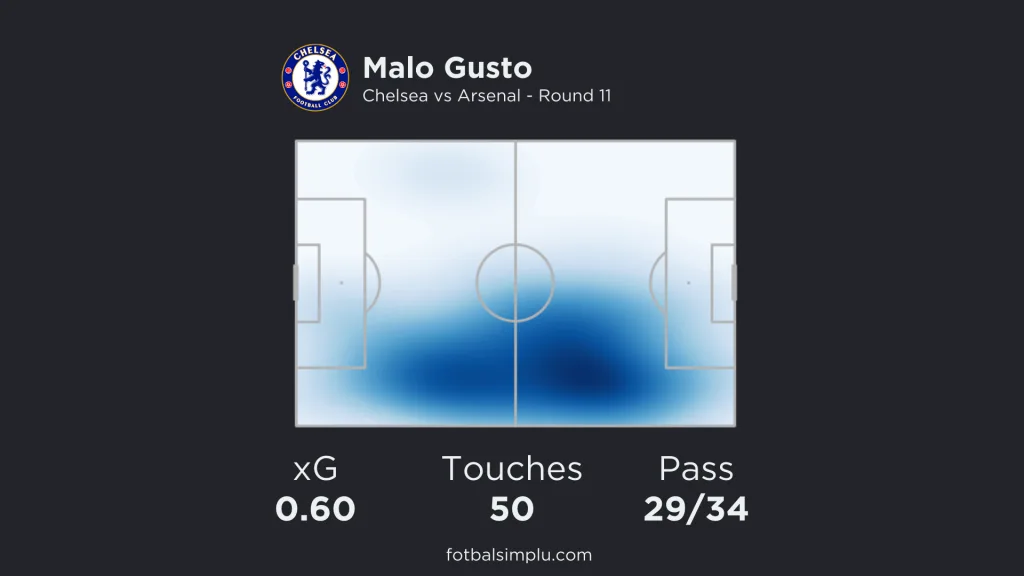
Malo Gusto inverting in that position created Chelsea’s box midfield, alongside Cole Palmer, and together with the back line of the two double pivots, Moises Caicedo and Romeo Lavia. So Chelsea’s shape during build-up was with a back three, formed by Cucurella, Colwill and Fofana, the box midfield, and Nicolas Jackson, Pedro Neto and Noni Madueke as their three forwards.
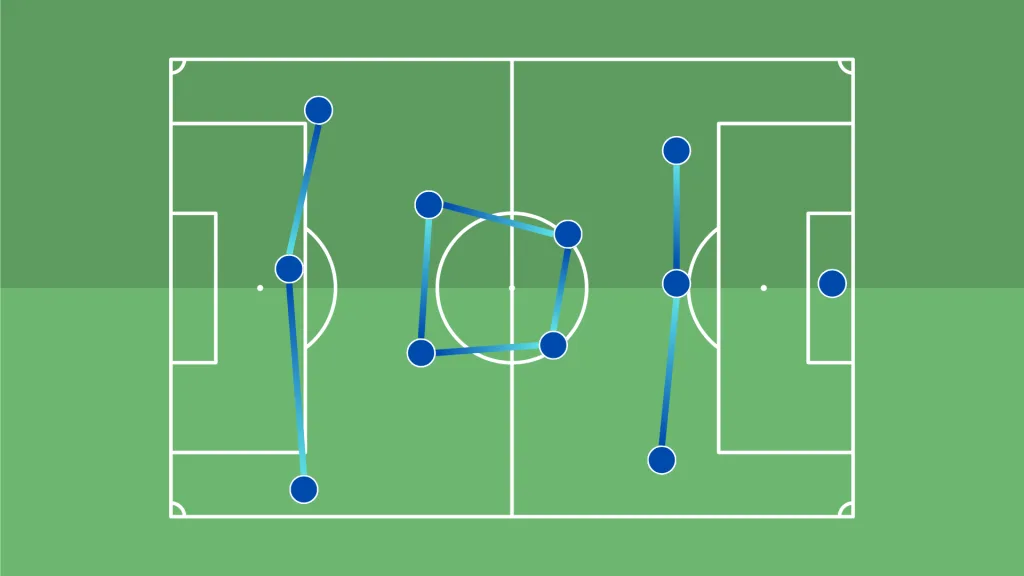
Arsenal’s Defensive Shape
Mikel Arteta defends in a 4-4-2 and this game was no exception. But Arsenal needed to adapt their defensive structure, so the midfield was safe and compact. Otherwise, Chelsea’s box midfield would completely outnumber the Gunners’ two defenders in the central areas.
To solve this issue, Mikel Arteta instructed his two forwards, Kai Havertz and Martin Odegaard, to stay back and do not press aggressively. They were tasked with covering Moises Caicedo and Romeo Lavia. This allowed Arsenal to keep a one-on-one marking in midfield and not allow the ball to come through.
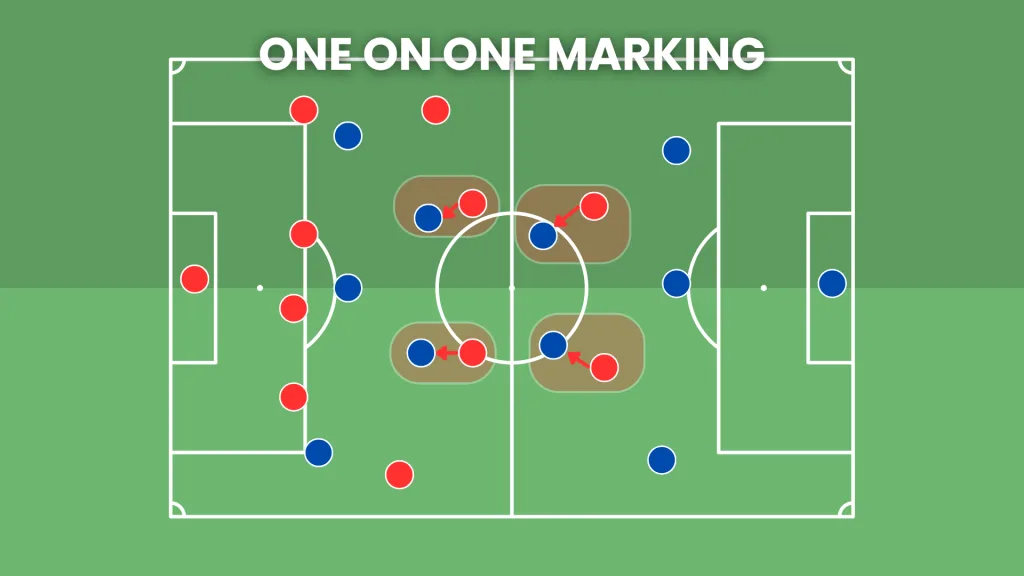
How Wesley Fofana Exploited The Defensive Structure
This defensive structure, although solid in midfield, leaves one opening. The back line is not under any pressure and has space in front of them. Of course, their passing lanes are cut, but that does not mean there is no opportunity to progress. Because if all passing lanes are cut, then nothing stops one from driving forward with the ball. And that is exactly what Wesley Fofana did in this game. With Kai Havertz occupied with keeping Moises Caicedo at bay, he left space for Wesley Fofana to drive the ball forward. This is reflected neatly in the statistics, as Wesley Fofana accumulated 151 yards of ball progression, second highest for The Blues.
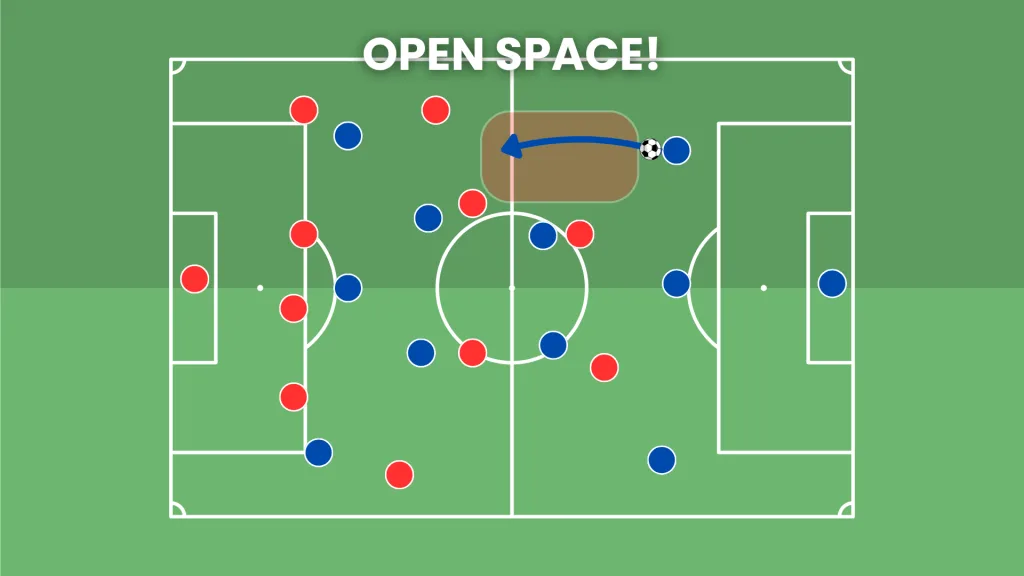
By making these runs, Wesley Fofana would put Kai Havertz into a difficult position. The striker would have to make a choice. Vacate the space in midfield to track Fofana, or stay in position to cover Moises Caicedo. If Havertz would track Fofana, then he would open up the space in midfield for Caicedo or Malo Gusto to receive the pass. If he stayed in his position, then Wesley Fofana would be clear to drive forward and progress the ball. He would then find Noni Madueke or Malo Gusto in advanced positions.
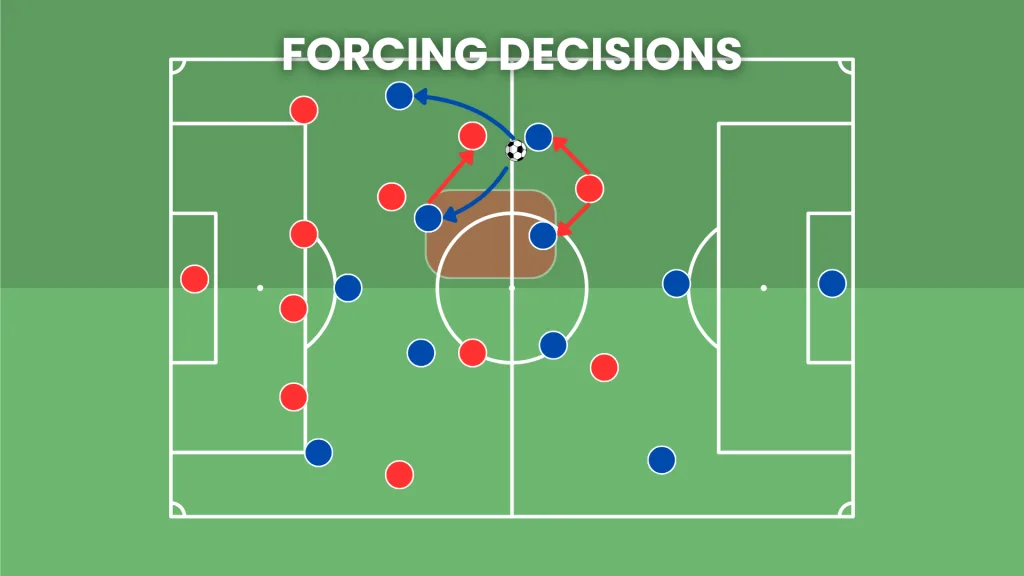
Those runs would sometimes end up with Wesley Fofana in the opposing box. He had a huge chance to score, in the 53rd minute from a cross by Noni Madueke. His shot had a xG of 0,36. Fofana was a key player in Chelsea’s build-up and offense against Arsenal. He drove the ball forward and progressed it further down the pitch. He showed excellent vision and decision making and his forward runs were an excellent addition to Chelsea’s offensive capabilities.

